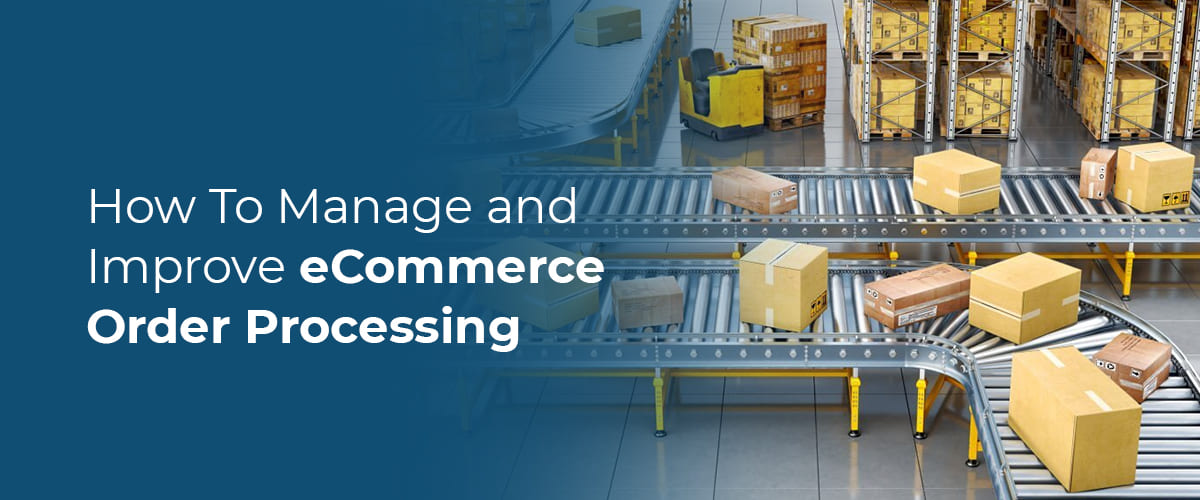
How to Manage and Improve eCommerce Order Processing
In any business, managing and improving eCommerce order processing is key to success. By optimizing your process, you can improve customer satisfaction, reduce costs, and increase efficiency. Here are a few tips on how to manage and improve your eCommerce order processing:
1. Define Your Process
The first step to streamlining your process is to map out each individual task involved in fulfilling an order. This will help you identify areas where improvements can be made.
2. Automate Process Where Possible
Once you have defined your process, look for ways to automate tasks where possible. This could include using software to automate email confirmation messages or setting up automatic shipping notification messages.
3. Simplify Your Returns Process
If customers are not happy with their purchase, make it easy for them to return the item. A simple and straightforward returns process will improve customer satisfaction and reduce stress on your team.
4. Communicate With Your Customers
Throughout the entire order process, keep your customers updated on the status of their purchases. This could include sending them tracking information or updates if there are any delays in fulfillment.
5. Review Your Process Regularly
As your business grows, your eCommerce order processing will need to evolve to meet the demands of your customers. Review your process regularly and make changes as needed to ensure that you are providing the best possible experience for your customers.
Seamless Integration
If you’re running an eCommerce business, then you know how important it is to have a streamlined and efficient order processing system. Unfortunately, many businesses struggle with managing and improving their order processing, which can lead to lost sales and frustrated customers.
One of the biggest challenges with order processing is ensuring that all of your different systems (inventory management, accounting, customer service, etc.) are integrated seamlessly. This can be a daunting task, but it’s absolutely essential for keeping your business running smoothly. Here are a few tips for managing and growing your order-processing activities:
- Systems Integration: Make sure all of your systems are integrated. This may seem like an obvious step, but it’s often overlooked. If your inventory management system isn’t integrated with your accounting system, for example, then you could end up over-selling products and disappointing customers.
- Automate Order Processing: Automate as much as possible. The more you can automate your order processing, the less room there is for human error. There are a number of great software programs out there that can help you automate various aspects of your order processing, from tracking inventory levels to sending out confirmation emails to customers.
- Order Tracking: Keep track of every order. It’s important to have a complete record of every single order that comes in so that you can track patterns and spot any potential problems quickly.
End-to-End Order Visibility
An eCommerce order processing system should provide end-to-end visibility into every step of an order’s journey. This means that businesses should be able to track orders from the moment they’re placed until they’re delivered to the customer.
End-to-end visibility into an order’s progress can help businesses identify and address any issues that may arise during fulfillment. It can also help businesses keep customers informed about the status of their orders, which can improve customer satisfaction and loyalty.
There are a few key things that businesses need to do to enable end-to-end visibility into their eCommerce orders. First, they need to have a robust order management system in place. This system should be able to track all aspects of an order, from placement through delivery. Second, businesses need to integrate their various systems so that information flows smoothly between them. This includes integration with accounting, warehouse, and shipping systems. By integrating these systems, businesses can ensure that everyone involved in fulfilling an order has the most up-to-date information.
Third, businesses need to establish clear communication channels between all stakeholders in the order fulfillment process. This includes customers, sales staff, customer service representatives, warehouse staff, and shipping carriers. By ensuring that everyone is on the same page, businesses can avoid misunderstandings and delays. By taking these steps, businesses can improve their eCommerce order processing and provide their customers with a better experience.
Right Shipper
When it comes to eCommerce order processing, one of the most important decisions you’ll make is choosing the right shipper. The shipping process can be complex and there are a number of factors to consider, but if you take the time to research your options and choose a reputable shipper, you’ll be well on your way to streamlining your order processing.
Here are some things to keep in mind when choosing a shipper for your eCommerce business:
- Shipping costs: Be sure to compare shipping costs from different carriers before making a decision. You’ll want to find a carrier that offers competitive rates without sacrificing quality or service.
- Transit time: How quickly does the carrier deliver? If you need your orders delivered quickly, be sure to choose a carrier with fast transit times.
- Delivery options: Does the carrier offer different delivery options, such as standard or express shipping? Make sure they can meet your needs.
- Tracking: Can you track your orders from start to finish? This is important for keeping tabs on your inventory and ensuring that orders are delivered on time.
- Customer service: In the event that something goes wrong with an order, you’ll want to work with a carrier that has excellent customer service. That way, you can get any issues resolved quickly and efficiently.
Exception-Based Order Management
Order processing is a critical part of any eCommerce business. In order to manage and improve your order processing, you need to have a clear understanding of what your options are and how they can work for you.
One option for improving your order processing is to enable exception-based order management. This means that you will only process orders that fall outside of the norm. For example, if an order is missing a required piece of information, you can cancel it before it is processed. This can help to improve your overall efficiency because you will not be wasting time on orders that cannot be completed. It also helps to improve your customer service because you can avoid potential problems with incomplete orders.
If you are interested in enabling exception-based order management, there are a few things to keep in mind. First, you need to make sure that you have a clear understanding of what qualifies as an exception. Second, you need to set up systems and processes to handle these exceptions. Finally, you need to train your team on how to use these systems and processes.
By following these tips, you can enable exception-based order management in your business and start seeing improved efficiency and customer service levels.
1. Choose a Right Warehouse Location
There are a few things to consider when choosing a warehouse for your eCommerce business. First, you need to consider the cost of labor in the area. Second, you need to think about the cost of shipping from the warehouse to your customers. Third, you need to consider the inventory turnover in the area. Fourth, you need to think about the location of your suppliers.
When it comes to the cost of labor, you want to choose an area with a lower cost of living. This way, you can pass on the savings to your customers in the form of lower prices. When it comes to the cost of shipping, you want to choose a location that is centrally located. This way, you can ship orders out quickly and efficiently. When it comes to inventory turnover, you want to choose a location with high turnover. This way, you can keep your inventory levels low and turn items over quickly. Lastly, when it comes to supplier locations, you want to choose a location that is close to your suppliers. This way, you can receive shipments quickly and efficiently.
2. Communication
Make sure you keep the lines of communication open with your customers throughout their ordering process. This means being available to answer questions, provide updates, and resolve any issues that may arise.
The most important thing is to be responsive and communicative with your customers. Let them know what’s going on with their order, and if there are any delays or issues, be sure to let them know as soon as possible. Order processing can be a complex and time-consuming task, so it’s important to keep your customers in the loop every step of the way.
If you can build a good relationship with your customers and communicate effectively, you’ll find that order processing becomes much smoother and simpler. And remember, happy customers, are more likely to come back and do business with you again in the future!
Conclusion
Improving your eCommerce order processing doesn’t have to be difficult. By following the tips above, you can make sure that your orders are processed quickly and efficiently. By streamlining your order processing system, you can improve your customer service and satisfaction levels. In turn, this will lead to more repeat business and a loyal customer base. Improving your eCommerce order processing is an important part of running a successful online business. By taking the time to implement the tips above, you can ensure that your business runs smoothly and efficiently.



